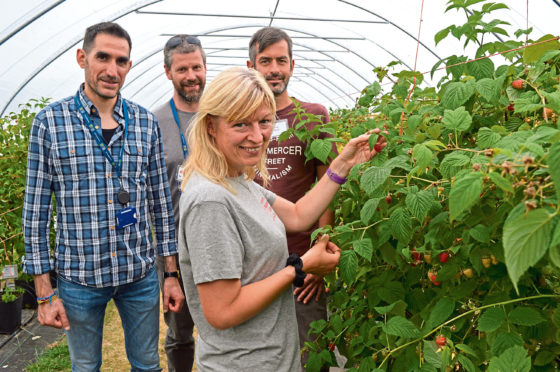A robotic, chemical-free solution to controlling powdery mildew, one of the most common diseases in strawberry cultivation, could be commercially available to growers in under a year.
Belgian researcher Peter Melis, from Research Centre Hoogstraten, told growers at the James Hutton Institute’s (JHI) Fruit for the Future event at Invergowrie that the automated use of UV-C light in conjunction with integrated pest management has been proven to be a successful alternative to spraying strawberries up to 10 times in a season.
“The objective is to successfully control powdery mildew without disrupting other aspects, like beneficial mites, in the cultivation.
“We are working on an automated robot that can apply UV light into the crop and we’re getting very decent results,” he said.
“On costs, we calculate that chemical control currently costs 2,500-3,000 euros per hectare, a big cost which can be invested in automated control with UV-C lamps, which should pay back in five years.”
Mr Melis said the optimum dosage of UV-C has been established, but researchers are still working on adjustments to the wheeled robot which will go on rails in fruit tunnels applying UV-C light at 1.1km/hour through the night.
“We are still working out how to get the robot to switch from row to row because we can’t use GPS, as metal in greenhouses disrupts the signal.”
Mr Melis said large-scale strawberry growers in Belgium and Holland are already anxiously waiting for the prototype to be ready.
Also speaking at the event, JHI soils modeller Matt Aitkenhead called on soft fruit growers to suggest specific apps they would find useful following the production of apps produced by the institute which have been aimed at barley and potato growers.










